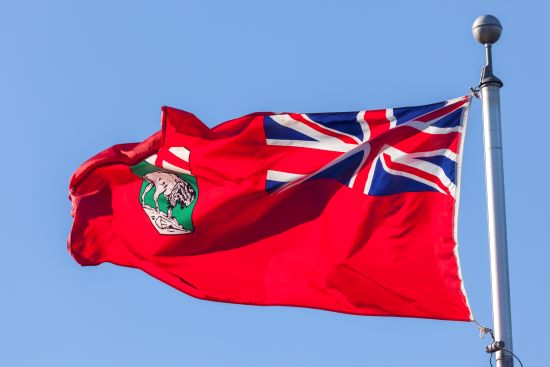GroupNews – April 2021
Eckler’s GroupNews monthly newsletter provides commentary on the issues affecting Canadian group benefit plans.
In this edition:
- Manitoba pauses increase to pharmacare deductible
- Update on biosimilars in British Columbia
- Federal government extends COVID-19 leaves under Canada Labour Code
- Canadian jurisdictions consider leaves for COVID-19 vaccinations
- Budget updates: Focus on healthcare in Nova Scotia, Ontario, Quebec, Saskatchewan, Manitoba, and federally
- Data shows willingness to receive the COVID-19 vaccine in Canada
- Amendments to Section 3462 Employee Future Benefits: Implications for Plan Sponsors
Benefit plan management
Manitoba pauses increase to pharmacare deductible
 According to a March 31 news release, in an effort to help Manitobans deal with the financial uncertainties caused by COVID-19, the government of Manitoba will freeze the pharmacare deductible rate for the second consecutive year. The rate for 2021–2022 will remain at 2019–2020 levels. The annual deductible is determined by multiplying the adjusted total family income for 2019 by the applicable deductible rate. Pharmacare will pay 100% of eligible expenses after the minimum deductible of $100 is met.
According to a March 31 news release, in an effort to help Manitobans deal with the financial uncertainties caused by COVID-19, the government of Manitoba will freeze the pharmacare deductible rate for the second consecutive year. The rate for 2021–2022 will remain at 2019–2020 levels. The annual deductible is determined by multiplying the adjusted total family income for 2019 by the applicable deductible rate. Pharmacare will pay 100% of eligible expenses after the minimum deductible of $100 is met.
The following table provides a breakdown of the deductible rates:
|
Adjusted |
Deductible Rate: |
| $0 – $15,000 | 3.17% |
| $15,001 – $21,000 | 4.49% |
| $21,001 – $22,000 | 4.53% |
| $22,001 – $23,000 | 4.61% |
| $23,001 – $24,000 | 4.67% |
| $24,001 – $25,000 | 4.72% |
| $25,001 – $26,000 | 4.79% |
| $26,001 – $27,000 | 4.84% |
| $27,001 – $28,000 | 4.90% |
| $28,001 – $29,000 | 4.94% |
| $29,001 – $40,000 | 4.97% |
| $40,001 – $42,500 | 5.39% |
| $42,501 – $45,000 | 5.52% |
| $45,001 – $47,500 | 5.64% |
| $47,501 – $75,000 | 5.71% |
| $75,001 and greater | 7.15% |
Impact: Private plans that cover the employee deductible for eligible members will not experience increased costs for the 2021–2022 benefit year.
Benefit plan management
Update on biosimilars in British Columbia
As previously reported in GroupNews in 2019, British Columbia PharmaCare introduced a Biosimilars Initiative in 2019 to move patients from biologics to biosimilars for specific indications. Effective April 7, the government is expanding the initiative to cover individuals being treated with Humira to an adalimumabe biosimilar brand such as Amgevita, Hadlima, Hulio, Hyrimoz and Idacio.
The province will allow a six-month transition period to provide time for patients to start the switching process with their prescriber. During the transition period from April 7, 2021 to October 6, 2021, PharmaCare will cover Humira and biosimilar brands of adalimumab for all currently covered patients. At the end of the transition period, PharmaCare will only cover an approved biosimilar.
Impact: From December 1, 2019 to November 30, 2020, the British Columbia government spent approximately $94 million on coverage for Humira. As the biosimilars are at least 40% less expensive, this can produce significant savings for the PharmaCare program in the province. The impact for savings on private plans will depend on how the drug plan is integrated with the provincial pharmacare program.
Legal and legislative news
 Federal government extends COVID-19 leaves under Canada Labour Code
Federal government extends COVID-19 leaves under Canada Labour Code
On March 31, 2021, the federal government published regulations amending the Canada Labour Standards Regulations made under the Canada Labour Code to increase the length of federal COVID-19 leaves from two to four weeks unpaid leave for employees who:
- have or might have contracted COVID-19
- have underlying conditions, are undergoing treatments or have other specified circumstances that makes them more susceptible to COVID-19, or
- have been advised to isolate by a medical practitioner, public health authority or other specified authority for reasons related to COVID-19.
Job-protected leave to care for a child or a family member who required care is also increased to
38 weeks (previously 26 weeks).
These changes align the COVID-19 leaves with changes to the Canada Recovery Caregiving Benefit and the Canada Recovery Sickness Benefits.
Impact: Federally regulated employers will need to ensure they comply with benefits continuation requirements under the Canada Labour Code.
Legal and legislative news
Canadian jurisdictions consider leaves for COVID-19 vaccinations
| Saskatchewan |
Saskatchewan has become the first jurisdiction in Canada to implement a paid leave to allow an employee to take time off work to be vaccinated for COVID-19. Effective March 18, 2021, The Occupational Health and Safety Regulations, 2020 have been amended to stipulate that workers:
|
| British Columbia |
| The government of British Columbia has announced that, as part of the province’s COVID-19 immunization plan, it will introduce regulatory improvements under the Employment Standards Act to provide job-protected leave and paid leave for part-time and full-time workers to take time off to travel and receive the COVID-19 vaccine, or to take a dependent family member to be vaccinated.
The regulatory changes also expand job-protected leaves for reasons related to COVID-19 to ensure job protection for all eligible federal benefit programs such as the Canada Recovery Sickness Benefit and Canada Recovery Caregiving Benefit. |
Impact: Plan sponsors will be interested to see if any other Canadian jurisdictions follow Saskatchewan and British Columbia’s lead in providing paid vaccination leave. The changes in Saskatchewan and British Columbia will require plan sponsors to review their current plans to ensure they are complying with benefits continuation requirements.
Legal and legislative news
Budget updates: Focus on healthcare in Nova Scotia, Ontario, Quebec, Saskatchewan, Manitoba and federally
| Federal The 2021 Federal Budget, was tabled by Finance Minister Chrystia Freeland on April 19, 2021. Due to the COVID-19 pandemic, this is the first full budget from the government since 2019. Also see our Special Notice for further information on the 2021 Federal Budget. |
|
| Employment insurance sickness benefits
|
|
| Pharmacare |
|
|
Canada Recovery Benefit
|
|
| Employment Insurance Reform |
|
| Nova Scotia There are several items of interest, including: |
|
|
Health system improvements
|
|
| Mental health support |
|
| Long-term care | More than $1 billion for continuing care through improvements to long-term care and home care, a $119.6-million or 13 percent increase from last year includes:
|
| Ontario The Ontario government tabled its 2021 Budget, “Ontario’s Action Plan: Protecting People’s Health and Our Economy” on March 24, 2021. The Budget focuses heavily on relief measures to combat the ongoing COVID-19 pandemic, with an emphasis on related investments in healthcare. Items that may be of interest include: |
|
|
COVID relief
|
|
| Long-term care |
|
|
Mental health and addictions
|
|
| Quebec The 2021–2022 Quebec Budget, “Quebec is resilient and confident” was delivered March 25, 2021. The Budget focuses heavily on relief measures to combat the ongoing COVID-19 pandemic, with an emphasis on related investments in healthcare. Items that may be of interest include: |
|
|
Reviewing the QPP disability pension
|
|
| COVID relief and healthcare initiatives | $15.2 billion between now and 2025-2026 that includes:
|
|
Taxation
|
|
| Saskatchewan
The Saskatchewan government released their 2021 Budget on April 6, 2021. The Budget contains a record $6.5 billion in healthcare funding and COVID-19 relief. The 2021─22 Ministry of Health budget of $6.12 billion, is an increase of $261 million or 4.5 percent from 2020─21. Items that may be of interest include: |
|
| Mental health |
|
| Autism spectrum disorder
|
|
| Insulin pump program and glucose monitoring |
|
| Ambulance fees |
|
| Manitoba The Manitoba government released its 2021 Budget on April 7, 2021. The Budget focuses heavily on health care measures and the ongoing COVID-19 pandemic, with an emphasis on investments in preventative measures and treatments. Items that may be of interest include: |
|
| Reduced wait times |
|
|
Cancer treatment
|
|
| Insulin pump program & glucose monitoring |
|
| Mental health |
|
| Smoking cessation | In April 2021, the government is launching a new Social Impact Bond (SIB) dedicated to helping people quit smoking in partnership with Pharmacists Manitoba. Under this SIB, Shoppers Drug Mart will invest $2 million over three years to fund smoking cessation initiatives, including counselling and nicotine replacement therapies. |
Impact: Governments across the country as well as the at the federal level have placed an emphasis on rebuilding healthcare systems that have been strained to their limits due to the ongoing COVID-19 pandemic. While most of the recent budget proposals do not directly immediately impact private plans, the focus on reducing wait times, increasing funding for mental health initiatives and improving access to frontline and virtual healthcare in the face of the pandemic will be welcome news for employees and residents across Canada. More is to come on the extension of EI sickness benefits.
Research
Data shows willingness to receive the COVID-19 vaccine in Canada
 With most provinces in Canada in the midst of the third wave of the COVID-19 virus, data from
With most provinces in Canada in the midst of the third wave of the COVID-19 virus, data from
Statistics Canada shows the increasing willingness of Canadians to receive the vaccine as the pandemic continues.
According to the study, while more than 75% of Canadians reported a willingness to receive the vaccine in September 2020, 80% reported they were somewhat or very likely to get the vaccine during the period from November to mid-December. There was some variation across the provinces with Prince Edward Island, Nova Scotia and British Columbia each reporting above the 75% Canadian average.
Willingness to receive the vaccine also varied slightly with older Canadians age 65 and older being slightly more willing at 82% to get vaccinated compared with 75% of those 12 to 64 years of age. Willingness to get the COVID-19 vaccine also varied markedly for diverse groups of Canadians. Among groups designated as visible minorities, willingness to get the COVID-19 vaccine ranged from 56% among the Black population to 82% among the South Asian population.
Impact: The willingness of Canadians across the country to receive the vaccine might be a predictor of our ability to eliminate or diminish the threat of COVID-19. Vaccinating the majority of Canadians is likely to contribute to recovery for the embattled healthcare system and allow for return to addressing other medical issues in a timelier manner.
Actuaries’ corner
Amendments to Section 3462 Employee Future Benefits: Implications for Plan Sponsors
In November 2020, Canada’s Accounting Standards Board (AcSB) announced final amendments to Section 3462 -Employee Future Benefits of Part II of the CPA Canada Handbook (CPA 3462). Along with clarifying the measurement of the Defined Benefit Obligation (DBO) for retirement and post-employment benefit plans that are required to prepare a funding valuation, the amendments also remove the previously permitted use of a funding valuation method and assumptions for defined benefit (DB) plans without a funding valuation requirement (unfunded plans). The amendments are effective for annual financial statements beginning on or after January 1, 2022, however, the AcSB is encouraging early adoption.
In some jurisdictions, pension benefits legislation now requires an explicit Provision for Adverse Deviation (PfAD) to be included in determining the minimum funding requirements of a DB pension plan. These amendments to CPA 3462 clarify that measurement of a plan’s DBO would include all components of a funding valuation including, for example, any applicable explicit PfAD. While this clarification will be of interest to plan sponsors reporting an obligation for a funded DB plan, a potential greater impact to a plan sponsor’s financial statements may be for plan sponsors who have to report an obligation for an unfunded DB plan (e.g. non-pension post-employment/retirement plans) who currently report these financial results using a funding basis consistent with their other funded plans.
The removal of the ability to measure the DBO of an unfunded plan, like a typical non-pension post-employment/retirement plan, using the funding valuation basis of a funded plan, could result in a substantial increase in the DBO of the unfunded plan. Typical discount rates used in a funding valuation (based on the expected return of plan assets) may be higher than the current discount rates used to prepare an accounting valuation of an unfunded plan (based on high-quality corporate bond yields). In fact, they may be considerably higher. For example, as at December 31, 2020, common discount rates used for funded plans were 5.75% per annum whereas common accounting discount rates for unfunded plans were 2.75% per annum. This would cause the DBO measured using a lower accounting discount rate to increase substantially. For example, for each 1.0% decrease in the discount rate assumption, the DBO might increase by 15%–25%, depending on the duration of the plan. While there may be a tempering of the DBO impact due to the removal of the PfAD requirement, the discount rate change is anticipated to still result in an overall increase in the DBO and accounting expense.
Impact: Plan sponsors reporting under CPA S3462 or CPA S3463 should consult with their actuaries to estimate the impact of these amendments on their plans, assess the options they have for their plan and its reporting and ensure they comply no later than fiscal years beginning on or after January 1, 2022.
This publication has been prepared by the GroupNews editorial board for general information and does not constitute professional advice. The information contained herein is based on currently available sources and analysis. The data used may be from third-party sources that Eckler has not independently verified, validated, or audited. They make no representations or warranties with respect to the accuracy of the information, nor whether it is suitable for the purposes to which it is put by users. The information is not intended to be taken as advice with respect to any individual situation and cannot be relied upon as such.
Current editorial board members are: Andrew Tsoi-A-Sue, Ellen Whelan, Charlene Milton, Philippe Laplante, and Nick Gubbay.